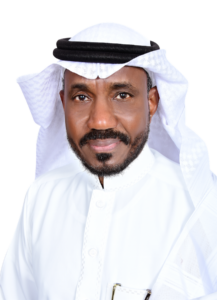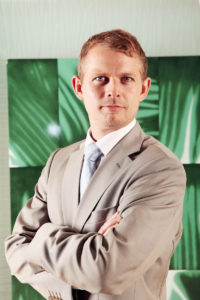Ali A Mokhtar, President Safety Engineering Chapter, Saudi Council of Engineers and President, SFPE (Society of Fire Protection Engineers), Saudi Arabia, in a conversation with Oscar Wendel, Campaign Manager, Safety Design in Buildings, shares his thoughts on fire safety and its future as a professional field in Saudi Arabia…

Ali A Mokhtar

Oscar Wendel
How did you get into fire safety?
I graduated with a degree in industrial engineering from King Abdul-Aziz University in 1981 and worked with Petroline (East/West Pipeline Company) as a project engineer. I then went to the University of Southern California (USC) to get my master’s degree from 1982 to 1984. On returning to Saudi Arabia, I worked in Riyadh Refinery, where I started as a Safety Design Engineer with the Technical Service and Engineering Department. I stayed almost 10 years in the refinery, and during this period I was promoted to Refinery Safety Superintendent and then to Safety Manager. In 1994, the Refinery, as part of SAMAREC and Petromin, was taken over by Saudi Aramco. I then moved from Safety to the Fire Protection Department as a Superintendent, Fire Protection, Ras Tanura Area, overseeing oil wells, gas plants, RT Refinery, airstrips and residential compounds. I stayed for four years, and from there I had many different assignments within the company, including Loss Prevention Department and RT Refinery and Distribution Operation, in addition to a one-year assignment in the United States with Chevron Refinery and RTFC, before I was assigned as Manager, Fire Protection Department with 1,500 staff and about 36 fire stations. I worked for Aramco for 21 years, and my work experience in fire safety management and engineering, as well as fire operations, is over 30 years.
What was the most important lesson you learnt about fire safety over all those years?
Fire safety is a noble and humanitarian profession, as its main objective is to protect and save lives and assets. I was fortunate, because I started my career in safety engineering and process safety management. When I moved to Saudi Aramco, I was assigned to the Fire Protection Department; despite not liking this assignment at the beginning, as I did not have experience in fire operations, it turned out to be a great opportunity for me to learn fire operations and develop fire protection engineering skills and knowledge. I learnt that engineers with firefighting and fire operations background and experience will make excellent fire safety engineers. In the meantime, integrating fire safety engineering with fire operations will enhance and improve firefighting operations and services by designing and specifying better equipment for firefighters and also using performance- based design versus prescriptive [design].
What can you tell us about the technology and tools available for firefighting in the Gulf?
We have the most sophisticated firefighting technology and tools in the Gulf area. For example, we built the most advanced fire training ground in the world in Saudi Aramco almost 10 years ago in Juaymah Area; recently, a private investor built another fire training ground in Jubail Industrial City. In Saudi Aramco, we succeeded in integrating the engineering concept with the operations. The Fire Department had many engineers that worked to improve response time and firefighting skills, designing better trucks and equipment that were specifically adapted to our needs by looking at different scenarios we may come across. Along with the training, this helped improve our performance.
You now run a training centre. Do tell us about that.
After my retirement, I co-founded a company that performs two functions – MIT and Fire Safety Training. In Training, we are specialised in Emergency Management, Occupational Safety and Health, and Fire Safety Engineering. We have over 20 courses approved by Technical and Vocational Training Corporation (TVTC) and Civil Defense. Our courses meet internationally recognised standards, such as NFPA (National Fire Protection Association) and OSHA (Occupational Safety and Health Administration) requirements. Also, our trainers are bilingual and speak Arabic and English.
How was it to move from petrochemicals to the built-environment?
We were fortunate in being able to work at Saudi Aramco, because we dealt with all types of risks and occupancies. Though Saudi Aramco is an oil company, it has compounds, high-rise offices, residential buildings, airstrips, oil wells, offshore platforms, refineries and gas plants. The risk analysis is different. Each of these risks and occupancies has its codes and standards to deal with fire safety. With residential buildings, you prioritise evacuation and the safety of the people, inside. But I think that having experience in industrial fire safety makes you well prepared, because it is more complicated with stakes and risks that are much higher. I’m talking, in particular, about hazardous chemicals that can cause enormous harm to people in nearby populated areas, in the case of fires. Of course, in residential areas, you have a different type of risk to consider, with the immediate presence of more people. And the importance of saving people is different from firefighting in industrial parks. Nonetheless, the potential consequences are more severe in industrial plants and installations, where damage can spread to hundreds of miles away.
How do you carry out the training?
We do it mostly on-site at the client, but we also have our training facilities with classrooms. It is both practical and theoretical training – fire management, safety management and fire safety engineering. Everything from designing safe fire systems in buildings, with alarms and fire- suppression systems. Our programmes and courses are all approved by the TVTC that goes through the Civil Defense.
How do you see the future of fire safety as a professional field in Saudi Arabia?
Safety awareness is growing in Saudi Arabia, from the highest government officials to the broad public. So many things are happening now to build on this momentum with new declarations, where we are moving towards safety, as part of the Saudi Vision 2030.
Some schools have started offering diplomas in health and fire safety. But there is a need for higher levels of education to provide a degree in fire safety engineering. Some schools have started talking to us about developing a master’s programme, and I hope that can go forward to develop this as a standalone discipline and institution.
Besides having this company, I have also established AMConsult Office, which provides engineering consulting services in fire safety. Besides those two activities, I am the president of the SFPE-SAC (Society of Fire Protection Engineers – Saudi Arabian Chapter), established in 2005. The chapter has conducted six bi-annual conferences so far. These conferences are about improving fire safety standards and sharing experiences among professionals. Also in 2016, I was elected as Chairman of the Safety Engineering Chapter of the Saudi Council of Engineers.
Cladding of buildings is one of the problem areas. What is your view?
We are aware of the dangers of sub-standard materials. As part of the Safety Engineering Chapter, we have conducted two workshops on cladding – one in Al Khobar, and the other in Jeddah, with the Civil Defense, to address the dangers of the cladding. What is important is to have a high standard of non-combustible cladding. Also, it is important to put in place exterior fire-suppression systems with sprinklers, which can quickly put out fires on the exterior of buildings.
Copyright © 2006-2025 - CPI Industry. All rights reserved.